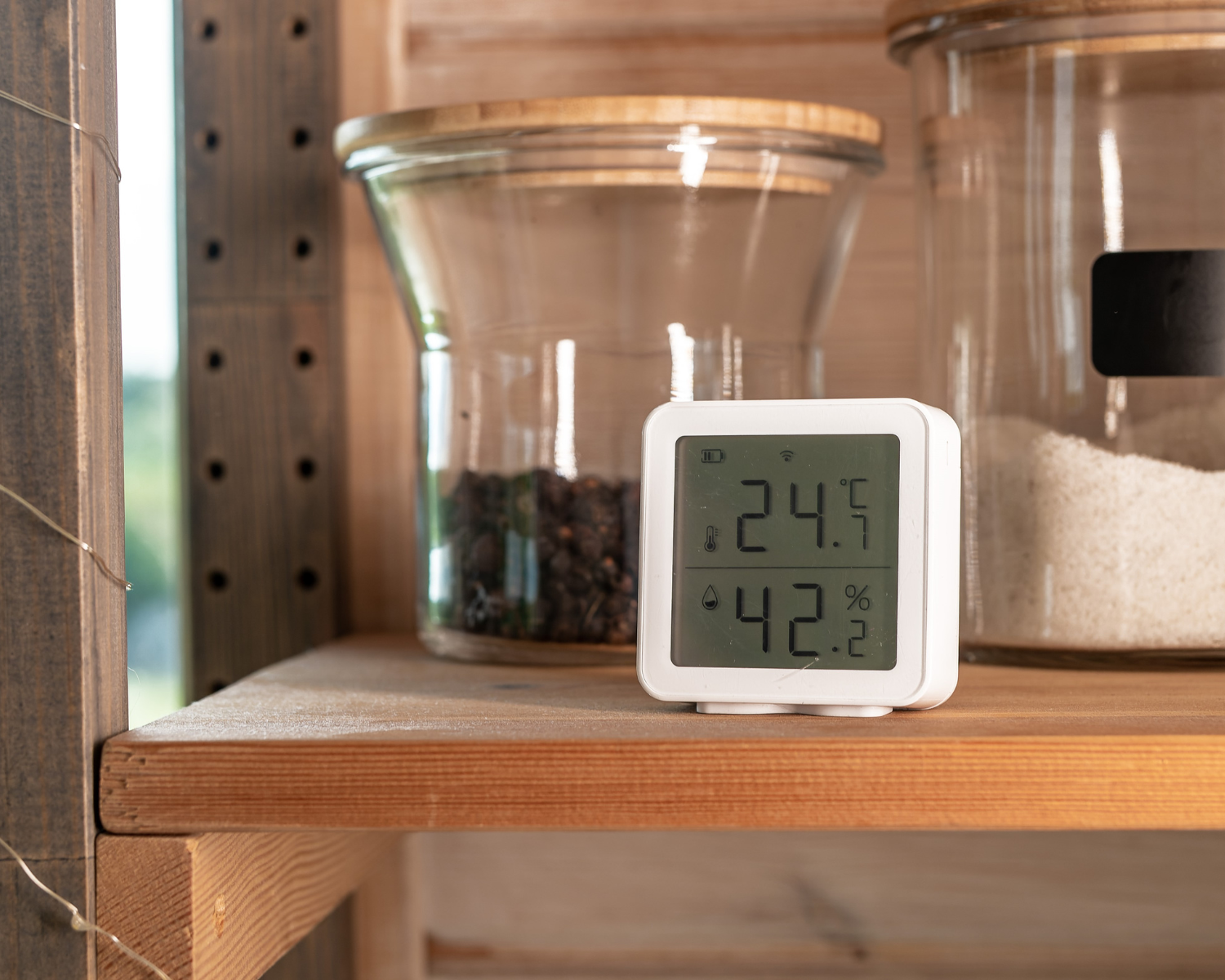Scientists have been working on an amazing new invention: lampshades that transform indoor air pollutants into harmless compounds. This easy-to-use innovation makes use of heat from light bulbs – a form of energy which would otherwise have been wasted – to improve air quality at home. This lampshade system can be made using a thermocatalyst made of titanium dioxide and platinum, and potentially even the much cheaper copper, to convert harmful volatile organic compounds (VOCs) in your indoor air into acetaldehyde, then into formic acid, and eventually, into carbon dioxide and water. Turn on your lamp, and voila! You’re also improving the air quality at home!
Experiments to enhance this air-cleaning system are still ongoing, and it may be some time until such simple designs for household items can address your questions about how to improve air quality at home. Until then, you don’t have to wait around lamenting the musty air at home. There are some simple and effective ways to ensure that the air you and your family breathe is as clean as possible.
But before we get there, what is affecting the air quality at your home in the first place?
Causes of poor air quality at home: Indoor air pollutants and their sources
The World Health Organisation estimates that roughly 4.2 million people die prematurely due to indoor air pollution. While outdoor air pollutants from motor vehicles and factories can undoubtedly make their way indoors, there are also a number of harmful pollutants with indoor sources. Indoor air pollutants include VOCs, carbon dioxide (CO2), carbon monoxide (CO), formaldehyde, ozone (O3), particulate matter (PM), sulphur dioxide (SO2), nitrogen dioxide (NO2), and more which can cause respiratory, cardiovascular, and other health issues.
These are generated as a result of human activities like cooking, cleaning, or using certain personal care or cleaning products. They may also arise as a consequence of the construction techniques or building materials used to construct your home, office, school, or other enclosed space. For instance, air quality at home can deteriorate significantly due to tobacco smoke from cigarettes, pipes, or cigars. Tobacco smoke contains at least 70 carcinogenic chemicals, which can cause chronic obstructive pulmonary disease and cardiovascular diseases, even leading to heart attacks when inhaled. Even passive smoking has been associated with lung cancer death, with tobacco smoke allegedly causing 10x more air pollution than even diesel car exhaust.
In many developing countries, particulate matter from indoor cooking stoves and heating devices that use solid fuels like coal, wood, or dung has also been linked to asthma, heart disease, respiratory infections, and cancer. Globally, the chemicals in cleaning products are another element deteriorating air quality at home. They emit toxic fumes and VOCs which have both short- and long-term health effects like nausea, headaches, and liver, kidney and central nervous system (CNS) damage. Mould, which grows on ceilings, floors, walls, and in basements in humid or damp environments, is associated with respiratory infections and allergies. And pet dander, shed from animal fur, skin, and even saliva, could also be why your air quality at home feels stuffy, giving you asthma attacks, hay fever, or other allergies.
How to improve air quality at home
Now that you’re aware of the hazards that you’re exposed to during the time you spend indoors, you must be wondering how to improve air quality at home, the office, or any other community, work, or recreation space you run or spend time at.
Awareness
Well, before action comes awareness. The first step is to invest in an accurate indoor air quality monitor. Elsewhere on this blog, we have provided detailed guidelines on how to select the best IAQ monitor for your specific purposes. (Spoiler: this involves selecting IAQ monitoring devices with appropriate sensors, high accuracy levels, ease of sensor calibration, and much more.)
Then comes a simple three-step process: step one – source control; step two – ventilation; and step three – cleaning your indoor air.
Source control
While most people tend to seek ways to clean up already polluted air, prevention is the ideal solution to the problem of how to improve air quality at home. Source identification and control enable prevention. You could either eliminate the presence of harmful pollutants by altering your activities – this may be avoiding burning candles, fires, or incense indoors, not using kerosene heaters, eliminating the use of air fresheners, cleaners, and personal care products which contain VOCs or other harmful chemicals, not smoking indoors, and selecting building materials and furnishings which are free of formaldehyde. But eliminating all sources of indoor pollutants is not possible; in such situations, you can try to reduce your exposure to them by using appropriate pillowcases if you are allergic to dust mites, keeping pets off the furniture, vacuuming carpets and rugs with a high-efficiency particulate air (HEPA) vacuum regularly, using exhaust fans in kitchens and bathrooms, and opening windows and doors when using unavoidable products which have VOCs in them.
Ventilation
Now for step two in how to improve air quality at home: ventilate. Poor ventilation is the cause of pollutant build-up, high humidity levels, and increased infection risk. Outdoor air has been shown to have two to five times fewer pollutants than the air you breathe indoors, so letting fresh outdoor air into your home can help dilute pollutant concentrations. Ventilation can happen mechanically, using fans and other mechanical systems to move the air; for instance, ceiling fans and outdoor-vented or exhaust fans can help with spot ventilation. It can be achieved by opening windows and doors. And it can be a result of infiltration based on your building’s design; outdoor air can find its way indoors through joints, cracks, chimneys, or openings where different parts of the building connect. Advanced heating, ventilation, and air-conditioning system (HVAC) systems also have provisions for circulating outdoor air within buildings.
Determining how much ventilation you need can be a complex process. It depends on the air exchange rate of a space and differs for residential areas, schools, hospitals, labs, etc. Residential buildings are recommended to have .35 air changes of outdoor air for indoor air per hour to keep air quality at home safe for humans; you may need an HVAC technician to figure out the air exchange rate at your home, or you could use one of the calculators available online. Otherwise, opening your doors and windows for 15 minutes daily can also contribute to improving air quality at home.
Of course, sometimes, the air outside our homes may not be so clean – maybe you live near an industrial area, there is a forest fire raging in the distance, or a busy highway nearby throws particulate matter up into the air you breathe. In such scenarios, ventilation may not be the solution.
Air cleaning
When source control and ventilation still leave some pollutants hanging in the air and have you wondering how to improve air quality at home, you can rely on different methods to clean the air. This generally involves investing in a portable air purifier or an HVAC system. Portable air cleaners or purifiers are usually better for single-room use. Purifiers with HEPA-rated filters are ideal; if your home also has gaseous pollutants, activated charcoal filters may also work wonders. In either case, you need to replace filters at appropriate intervals. When it comes to HVAC systems, the technical demands of such a system may need you to employ the services of an HVAC professional. Relying on HVAC systems usually involves duct-mounted air cleaners installed on central HVAC systems. This will also involve regularly replacing filters.
There you have it – simple, yet effective ways to ensure that your home is indeed a safe space for you and your family.




Leave a Reply